#Mel Chin
Explore tagged Tumblr posts
Text

Mel Chin, Bat and Dove
43 notes
·
View notes
Text



Michael Joo, “Noospheres (Composition OG:CR)”, 2024

Cannupa Hanska Luger, “Sovereign”, 2024

Yoshitomo Nara, “A Sinking Island Floating in a Sea Called Space 1 and 2”, 2024
For the group exhibition Breath(e): Toward Climate and Social Justice, Hammer Museum has gathered artists from around the world to present work that addresses environmental and social issues. The exhibition is part of the PST ART: Art and Science Collide programming taking place throughout Southern California.
From the museum about the exhibition-
The confluence of cataclysmic events that marked the year 2020-among them the global COVID-19 pandemic and ensuing economic crisis, the rise in anti-Asian hate crimes, and the murder of George Floyd, which gave powerful momentum to Black Lives Matter and other social justice movements-created a rupture. For many, it felt like the end of the world that they had known. Under circumstances of physical and psychological lockdown, the very notion of taking a single breath-an act vital to multispecies existence since time immemorial-took on renewed significance. Breathing as an act of resistance and survival in the face of racial inequity and a global health crisis calls attention to the inextricable link between social and environmental injustice. The often imperceptible but ever growing burden of climate-related tragedies-the thawing cryosphere, extreme heat, flooding, deforestation, radioactive aftermaths of wars, and ocean acidification-has played a direct role in the deterioration of economic conditions and the displacement of populations.
Breath(e) assembles artists from around the world who share concerns about threats to their communities and environments. The exhibition foregrounds an ethical stance that critiques the privileging of the human being as the most significant among all entities and instead values interdependence. Some of the works reassess philosophical assumptions regarding what constitutes the “human,” while others question who speaks on behalf of the rights of nature and how we adjudicate the agency of the earth, trees, air, and oceans. The exhibition also highlights artistic practices that have transformed the cultural tropes of the climate crisis into narratives of resilience, transformation, renewal, and coexistence. These narratives are explored through various means: restoring balance and belonging to the land through speculative models for future survival; exploring the regenerative capacities of waste through structural transformations in life cycles; making visible the impact of anthropogenic violence on our bodies over time; the passing down of living knowledge that promotes biodiversity through multiple generations; giving voice to youth and empowering them with food sovereignty; and the radical presence of multispecies survival amid capitalist exploitation. Each of these strategies points to systemic shifts, reminding us of the power of each breath and of how the ethical principles of justice can be advanced amid life as well as on the path to extinction.
Below are a few selections and some additional information from the museum.


About the work above-
Identifying as both a scientist and an artist, Xin Liu uses the language of technological development to explore our desire to preserve and artificially extend biological life. In 2023, inspired by scientific innovations in cryonics and egg freezing, Liu developed Cry:0, a series of mixed-media sculptures that includes The Mothership, a science fiction-like panel equipped with a cooling mechanism that pulls water directly from the air, causing thin layers of frost to gradually develop on the surface of the central bronze mouth, which the artist cast from her own body. With its spectral, biomorphic form and evocative title, The Mothership reflects on technologies designed to manipulate time as well as the central role played by the female body in perpetuating the human species.

Installations by Korean art collective ikkibawiKrrr and Garnett Puett (structure in the back on the right)
About the ikkibawiKrrr multimedia installation and video-
The Korean collective ikkibawiKrr’s expanded approach to art making encompasses performance, workshops, and events. The neologism ikkibawiKrrr consists of the Korean words ikki, meaning “moss”; bawl, meaning “rock”; and krrr, an onomato poetic word that implies a rolling motion. Through its work the group aspires to be “moss-like,” an organism constantly adapting in response to its surroundings. It has focused its recent work on the culture and ecology of the tropical Jeju Island, located off the southern coast of Korea.
A popular tourist destination known for its pristine ecosystem, Jeju Island is home to a community of haenyeo (female divers, or “women of the sea’), who are venerated for their ability to hold their breath for long periods of time while underwater. Upon rising to the surface, the haenyeo make a distinctive whistling sound as they rapidly exhale carbon dioxide and inhale fresh oxygen, a breathing technique called sumbisori, or “breath sound.” A matriarchal community committed to environmentalism, the haenyeo have been sustainably harvesting seafood for centuries. Given their symbiotic relationship with nature, their already arduous work has been greatly impacted by climate change, particularly rising water temperatures, which have harmed algae and changed the migratory patterns of predatory fish. Additionally, Jeju Island is not as clean as it once was, and the haenyeo now risk being trapped by discarded fishing nets and spend their time collecting plastics from the ocean.
In the video that forms part of ikkibawiKrr’s multimedia installation Seaweed Story (2022), a haenyeo choir stands on the cliffs of Hado, a fishing village on Jeju Island, singing a regional variation on “Arrang,” an ancient folk song with strong ties to Korean nationalism. During Japan’s imperialist era (1910-45), the fishing industry exploited the haenyeo and overfished their waters, leading the women to organize local cooperatives and public demonstrations, many of which took place in Hado. Through their performance, the haenyeo reinforce their connection to both the ocean and historical resistance movements. The installation also includes a sandbox containing miniature replicas of the small houses where these women convene, rest, and change in and out of their wetsuits.

Below is Garnett Puett’s sculpture, located inside the enclosed structure pictured above, where bees help create the work.
From the museum-
A sculptor and fourth-generation beekeeper based in Hawaii, Garnett Puett collaborates with bees to create what he terms “apisculptures” (api is the Latin word for “bee”). Combining ancestral knowledge with his passion for art, Puett conceived of this signature method in 1983, when he was a graduate student at Pratt Institute in New York City. As demonstrated by the newly commissioned work on view, Puett emphasizes the creative process over any particular outcome. To initiate Untitled (Paradoxical Garden Downstream) (2024), he conceived a figurative armature for the sculpture, coated it in thick layers of beeswax using a rotating table of his own design, and enclosed it in a habitat for bees. He then introduced a locally sourced queen along with her hive, thousands of worker bees (female honeybees), who made the work their home. Over the course of its brief lifespan, approximately six weeks, the colony will gather nectar and pollen to sustain the queen while elaborating the structure with honeycomb. Working symbiotically, Puett and the bees will eventually arrive at a final apisculpture. Three previously realized works are on view in the same gallery.



Roxy Paine, “Chart”, 2024
From the museum about Roxy Paine and the work above-
Since the 1990s, Roxy Paine has made thousands of scientifically accurate reproductions of mushrooms, underscoring the important role played by fungi in balancing our ecosystems. As agents of decomposition, fungi drive the global carbon cycle-the process by which carbon moves between the soil, living organisms, and the atmosphere. Belonging to a category of artworks that Paine calls “replicants,” his synthetic fungi colonies convincing y mimic the ways organic mushrooms spread in concentrated areas, sprouting directly from the floor or from wall-hung supports. Paine has researched and replicated the three major types of mushrooms: parasitic fungi, which attack living matter, thus regulating the populations of their hosts; saprophytic fungi, which consume and recycle dead matter; and symbiotic or mycorrhizal fungi, which flourish synergistically with the roots of plants and trees, supporting forests as they absorb carbon. Also known as “climate change warriors,” mycorrhizal fungi have the capacity to delay the effects of global warming, but rising temperatures could be putting them at risk of decline.
Chart (2024), a multivariant field, presents lesser-known examples of parasitic, saprophytic, and symbiotic fungi, including Geastrum striatum, or earthstars; the coral-like Clathrus ruber, or cage fungus, a type of stinkhorn that attracts insects by smelling of rotten meat; the scaly, globular Scleroderma citrinum, or pigskin poison puffball; Sarcoscypha coccinea, or scarlet cup, composed of small, open ellipsoids, reminiscent of bodily orifices, that gather in moist moss or on the forest floor; and Lycogola epidendrum, creamsicle-colored pustules that, when naturally occurring, ooze pink slime when pressed. Paine also simulates the neon-bright nets of plasmodium slime mold, a saprophytic organism resembling fungi that consumes mushrooms, bacteria, and other rotting matter. While these species would not be found cohabitating in the wild, they unite in their effort to erode a Turkish rug patterned with abstract representations of flora and fauna. This syncretic rug, a product of merging cultures, stands in for the invisible, carpet-like mycelium, the network of threads that form the rootlike structure of a fungus.

Paintings from Mel Chin’s series of paintings for “Interpretation of Vision (or IOV, pronounced “eye of”)”
About Mel Chin’s work from the museum-
Commissioned for this exhibition, Interpretation of Vision (or IOV, pronounced “eye of”) consists of thirty-two paintings realized through personal connections with individuals whose lives were altered by phenomenological experiences. Chin believes that the first step in the collective undertaking to fight persistent social and climate injustice is to dismantle division and promote empathy toward others. Opposed to proselytizing, he feels obligated to take the first step.
Like the artist Frida Kahlo, Chin drew inspiration from retablos and ex votos, small-scale devotional paintings, typically on wood or metal, that serve as votive offerings. During the nineteenth century any life-changing event could warrant the making of an ex-voto as an offering of gratitude. Typically produced by anonymous artisans on behalf of a patron, these paintings represent the tragic circumstances, such as accidents and near-fatal Illnesses, that precipitated their commission, showing saints or martyrs intervening to save the life of the afflicted. IOV is a multistage commission that began with a public call for stories from people whose lives were altered by natural, spiritual, or supernatural phenomena. Inspired by the unnamed ex-voto artisans, Chin collaborated with each respondent to honor and elevate their stories. Each dialogue resulted in a diptych, a two-part painting, presented on an artist-designed, seismically sensitive plinth. In each work the rendering of reality is embedded into an aperture on the right, while its corollary, the depiction of the transformational experience, is mounted on the surface. The wall fluidly accommodates any shifts between perception and knowing.
Ron Finley created the large scale garden installation, Grounded for the exhibition, pictured below. Also included in his section of the exhibition are several of the shovels created by his artist friends for Urban Weaponry Project, Weapons of Mass Creation, located in a separate room.
From the museum-
Finley, also known as the Gangsta Gardener, empowers people to grow their own food and advocates for communities to have access to fresh, nutrient-dense, organically grown food. Through the Ron Finley Project, he has cultivated gardens in urban food deserts, places where access to healthy food and fresh produce is limited or nonexistent. In 2009 he began planting vegetables, fruit trees, and other greenery along parkways, the stretches of land between the sidewalk and the street, in South Central Los Angeles. “I wanted butterflies and hummingbirds. I wanted something pretty, like amaryllis and agapanthus, and I wanted it to smell like jasmine, juniper, mint, and orange blossoms,” he recalls. “So that’s what I did.” After receiving a citation from the city for gardening without a permit, he fought back, and the City of Los Angeles changed its ordinance regulating gardening on public land.
With the commissioned work Grounded, Finley brings his urban gardening practice to the Hammer, creating a green, nourishing respite on the museum’s terrace in emulation of his own extraordinary garden. Both sites include vegetables and fruit trees growing alongside artworks and repurposed objects and contain communal spaces intended to rejuvenate audiences while fostering dialogues about food access, empowerment, and freedom. Inside, Finley presents selected works from his ongoing Urban Weaponry Project, Weapons of Mass Creation (2018-), a project that underscores his deep-rooted devotion to art, design, gardening, and grassroots organizing. Seven years ago he noticed that many of his artist friends were working in isolation. In an effort to connect them, he began inviting each one to transform a common, mass-produced gardening shovel into a distinctive work of art. A testament to Finley’s strength in community building, the present installation represents only a small fraction of his expansive collection. “A tool of mass creation,” as he frequently calls it, the shovel becomes a twin symbol of artistic production and food cultivation.





Lan Tuazon also created a large installation outside of the main galleries (pictured below).
From the museum-
Part of a generation of artists invested in criticizing institutionalized systems, Lan Tuazon proposes methods for recirculating organic and human-made materials to sustainably extend the lifespan of our things. In a linear economy, most consumer products begin as natural resources extracted from the landscape only to conclude as waste in a landfill. Commissioned for this exhibition, Over Your Head & Under the Weather (2024) stages a circular economy by demonstrating techniques of material recovery. Single-use plastics have been industrially shredded and pressed into panels, surplus newspapers are densified into newspaper wood, and other organic materials like coconut fibers are reconfigured into papercrete. Tuazon also makes use of innovative industrial products. The entire structure is constructed from multifunctional WaterBricks, interlocking, modular storage containers originally designed to preserve food and water for emergency and disaster relief purposes, and the floor is lined with Biomason’s carbon-reducing/sequestering Biolith tiles, made with recycled aggregates and bacterium-cultivated cement.
Designed to resemble a functionalized minimal sculpture, Over Your Head & Under the Weather wraps around the building to form two primary architectural bays. One side houses an industrial shredder and a plastic-collection station. Visitors are invited to contribute to the work’s circular economy by donating their #2 and #5 plastics, which will later be processed and shredded. The windows on the other side of the structure contain sculptural reliefs from Tuazon’s Assorted Drive series. Drawing on the language of data storage, the Assorted Drives ironically preserve physical evidence of human production and consumption: found materials, plastic beverage rings, bread ties, caps, and confetti made from previously shredded plastics. Part of an ongoing series, the towering sculpture Future Fossil-made from mass-produced containers, cut and nested like Russian dolls-uses the metaphor of geological petrification to allude to the tremendous scale and indeterminate lifespan of consumer and industrial waste.



Tiffany Chung’s stored in a jar: moonsoon, drowning fish, color of water, and the floating world, 2010-11, pictured below, references Vietnam and its vulnerability to flooding and the rising sea level.


From the museum-
Through meticulous archival and mapping practices, Tiffany Chung commemorates the experiences of local communities facing sociopolitical and climate-related trauma, placing those experiences within a global context. Born in Vietnam during the Vietnam War, Chung was forced to relocate following the fall of Saigon in 1975 to one of the government’s New Economic Zones (NEZ) as part of a population redistribution program aimed at restructuring Vietnam’s economy and southern society. Chung moved with her family to the Mekong Delta, the southwestern region of Vietnam where the Mekong River meets the South China Sea. In 1978 she witnessed a historic riverine flood in the area that killed seventy-four, left seventy-nine thousand homeless, and impacted more than four hundred thousand people. Eventually Chung migrated to the United States, taking part in the massive exodus of refugees precipitated by the NEZ program. Today Vietnam is among the countries that are most vulnerable to sea-level rise. According to recent projections, by the year 2050 almost all the land in southern Vietnam could be engulfed, displacing twenty million people, or nearly one quarter of the country’s population.
In several works, Chung explores extreme flooding — a natural phenomenon that in Vietnam is exacerbated both by the construction of hydroelectric dams in the Mekong River Basin and by human-driven climate change-and proposes solutions. In 2010 she constructed stored in a jar: monsoon, drowning fish, color water, and the floating world, a large-scale model for a floating village. To create this utopian world, Chung drew a formal language from vernacular architecture throughout Asia and structured a city in emulation of actual floating communities: vessels and houseboats tethered together in Ha Long Bay in Vietnam; floating communities on Tonle Sap Lake in Cambodia; a makeshift system of interconnected house-rafts on the Song Kalia River in Sangkhlaburi, Thailand; and camps of floating palaces on a network of rivers in Srinagar, India.

Sarah Rosalena, “Exit Point”, 2019
About Sarah Rosalena’s work pictured above-
To make Exit Point, Rosalena trained a neural network to combine the Blue Marble photo and the M87 black hole image and output the results to a mechanical loom, which materialized each pixel as a thread in a Jacquard textile. As the Jacquard loom is considered a predecessor to the modern computer, her textiles also challenge linear accounts of technological progress. Through the use of artificial intelligence, Rosalena creates coiling, looping, and spiraling temporalities that function as tools for examining our past and present.

About Bently Spang‘s War Shirt #6- Waterways, pictured above-
The Northern Cheyenne artist Bently Spang creates multidisciplinary artworks inspired by the utilitarian and artistic practices of his ancestors, the Tsitsistas/Suhtaio people. One of Spang’s first such projects was War Shirt #1 (1998), which he made by stitching together family photographs and film negatives, using the negatives as fringe. Spang notes that ancestral war shirts are “reciprocal garments” created by the community to shelter warriors as they battle to protect that community. In 2017 Mountain Time Arts in Bozeman, Montana, commissioned Spang to create a work that would explore the influence of climate change on water resources and raise awareness of the issue in the region. The result was War Shirt #6-Waterways (2017), a multimedia sculptural installation that takes the form of a Plains-style war shirt.
The body of War Shirt #6-Waterways is made up of twenty-one monitors and fringed with six digital still photographs. With the help of a local support team, Spang welded the steel armature and programmed the monitors to present a synchronous, multichannel video, which he filmed while walking from the Tongue River, a tributary of the Yellowstone River that traverses Montana and Wyoming, to a local spring on the Northern Cheyenne Indian Reservation; the digital fringe presents images from a preserved plant press book collected by a tribal historian and ethnobotanist. “I’m telling the viewer to know your water, know where it comes from and how it gets to you, and then you can protect it,” says Spang. “We should all have a relationship with that water, with these places that the water manifests.”

About the Sandy Rodriguez work above-
Made during the first year of the COVID-19 pandemic, the multilingual map of the greater Los Angeles area YOU ARE HERE / Tovaangar / El Pueblo de Nuestra Señora la Reina de los Angeles de Porciúncula / Los Angeles (2021) draws inspiration from the region’s history. It includes depictions of the trial of Toypurina, an Indigenous woman who led a rebellion against the Mission San Gabriel in 1785, as well as sixteenth-century primary source materials, including the Florentine Codex (ca. 1529-69), an encyclopedic ethnographic study of central Mexico. YOU ARE HERE includes images of plants and animals used by Native peoples, which represent geographic locations and serve as indicators of the cardinal directions. Place-names are hand painted in English, Spanish, and Tongva to reference renaming in the region over time as a colonial act of aggression. Rodriguez wants visitors to encounter this painting as they might a way-finding map and to use it to reorient themselves in space and time. She studies, documents, and processes native botanical specimens that have healing properties to create pigments, inks, and watercolors, applying these handmade materials to amate paper made from the bark of trees in Puebla, Mexico. A symbol of Indigenous culture, this sacred pre-Columbian material was prohibited by the Spanish during the colonial period.
Pictured below is one of Yangkura’s “waste monsters”, Tongsinsa, and his film depicting the monster in public (him in the costume).
From the museum-
Working on the west coast of South Korea, Yangkura is a performance and installation artist who uses ordinary trash to represent the dynamics of foreign relations in northeast Asia. Provoked by the 2007 MT Hebei Spirit Oil Spill (HSOS), in which 10,900 tons of crude oil spilled into the sea and contaminated the Korean coastline, Yangkura has focused his practice on the effects of anthropogenic marine pollution. In 2013 he began collecting and categorizing the waste from North Korea, China, and Japan that washed ashore on the coast of South Korea. By tracing tidal movements, he established the migratory pattens for marine debris moving among these countries, discovering that Korea’s trash frequently makes its way to Tsushima Island in Japan. He suspects that this island’s unique geographic formation makes it behave like a vacuum for international garbage, allowing the waters east of Korea to stay relatively clean. As Yangkura’s research suggests, the litter collecting in our oceans does not recognize geopolitical boundaries.
In 2015 Yangkura began constructing “waste monsters” —whimsical, colossal trash costumes, each with its own fictive identity. Yangkura wears these costumes while stilt-walking in performances intended to draw public awareness to the grotesqueness of our collective marine pollution problem. While he recognizes other environmental activists attempting to shock the public into change, he does not believe this approach is sustainable. Instead, he prefers to broach the topic of anthropogenic pollution through storytelling, weaving fantastic, subliminal narratives to engage and educate. In 2017 Yangkura began working with Tsushima CAPPA, a Japanese environmental organization focused on promoting awareness of marine pollution and on cleaning Tsushima Island. He used this collaboration to create a new “monster,” a character he hoped would deftly underscore selfishness as a fundamental human problem. Forgotten Tongsinsa or Forgotten Messenger (2017-) is constructed from trash originating in Korea, China, and Japan recovered from the coast of Tsushima Island (the word tongsinsa refers to a messenger with a diplomatic purpose, and it was originally applied to envoys sent to Japan on goodwill missions during the Joseon era). Yangkura describes Forgotten Tongsinsa as a good monster who dearly misses home and is simply trying to find his way back again.



This exhibition closes 1/5/25.
#Hammer Museum#Art#Art Show#PST ART#Art Shows#Los Angeles Art Shows#Cannupa Hanska Luger#Climate Change#The Hammer Museum#Climate Justice#Environmental Activism#Yoshitomo Nara#Environmental Art#Garnett Puett#ikkibawiKrrr#Bently Spang#Lan Tuazon#Los Angeles Art Show#Mel Chin#Michael Joo#Mixed Media Art#Pacific Standard Time 2024#Ron Finley#Roxy Paine#Sandy Rodriguez#Film and Video#Sarah Rosalena#Science and Art#Sculpture#Sound Art
2 notes
·
View notes
Text

#intermediate sculpture#mel chin#Knowmad 1999#Interactive video instillation#36 Middle Eastern carpets
10 notes
·
View notes
Photo

6 notes
·
View notes
Text



spirit by mel chin saved my good for nothing life
0 notes
Text
TBH I need 2014 tumblr back because Yellowjackets is buck-fucking-wild rn and my dashboard is too mellow about it
#im not following the right ppl#yellowjackets spoilers#yellowjackets#Shauna is Will Graham trying to live a normal life#I need a 2-gif set that compares her and him BOTH with their chins covered in blood RIGHT NOW!!!!!!#mel watches shows
20 notes
·
View notes
Text



OH I CALLED THAT SHIT
#Arcane#Arc14#Mel Medarda#Kino Medarda#Mandar Liveblogs#It was the hair that bugged me#In the portrait of Kino Mel recieves he has dreads that go to his chin#How would my man be able to style that much hair UP with no beauty products???
15 notes
·
View notes
Note
For the ask game, 1 and 29 for anybody you like (or all of 'em if you feel like it haha)
are they associated with a certain color? what color do they wear the most?
I strongly associate all my little guys with at least one color! Elyss is teal/ turquoise of course, like her skin, but also green/brown together, and the almost periwinkle-ish grey of her eyes; Idri is PURPLE, specifically a bright warm purple, or purple and yellow/ purple and gold together; Juniper is brown and pale cornflower blue; Aubree is brown, green, or green/yellow together; Nyssa is pink and spring green; Melliwyk is lavender, but also turquoise, cream, or that luna-moth sort of green I keep accenting her outfits in; Felix is dark red; Kethri is sky blue or orange/yellow together; Tsakesh is silver and blue; and Ambrose is dusky purple, or purple/ pink/ orange/ yellow together (sunset palette!). I don't talk much about Ambrose as a little-played and retired character but I love his palette so much he bears mentioning for the Colors Question, haha
A lot of these associations come directly from wardrobe palettes, but not all of them; Elyss is mostly wearing black and blue these days (her favorite color is deep blue!) and Juniper wears browns and undyed-beiges almost exclusively-- she HAS a blue dress, but she rarely has any chance to wear it. In 'real life' Idri definitely wears lots of different outfits in various jewel tones, but I almost only ever draw her in purple because [jazz hands] I'm a lazy artist and Cartoon Character Wardrobe is very easy, lol.
29. are they associated with any particular element (air, earth, fire, water)?
The gimme here of course is Elyss, my beloved water girl 😌💕 Weirdly I associate Juniper with air pretty strongly, for how earthy she actually is (and how much she hates both flying and heights??). No one else has any particularly strong actual association with any of the classical elements, but if you expand to DnD 'elements' Melliwyk and Elyss are both associated with lightning!
ask about my OCs :3
#sarahmeeps#thank you! good questions :3#I could definitely make elemental associations for all of them but the only like. Textual ones are Elyss and my other genasi Kiele (fire)#and mel if you can count lightning#no one else leans strongly on like one particular flavor of magic or anything like that enough to be Known for it#juniper and earth I suppose but only because she's a druid? you know? it's less 'what she's associated with' and more 'the tools she has'#also I couldn't resist throwing almost everyone into the color question they literally all have some lol#the way I color coordinate my outfits/ nail polish/ pen ink colors/ scrunchies AS WELL AS dice for whatever blorbo I'm playing...!#as long as she's been honorable-mentioned in the tags kiele's colors are BRIGHT RED and black and yellow/gold (naturally)#[chin in my hands] ambrose's palette is so lovely... I've been meaning to do art of The Bards together specifically about like#their respective palettes and their respective associated vibes (ambrose dusk/ twilight and kethri dawn/ daylight)#ask thing#my OCs#elyss#idri#juniper#aubree#nyssa#melliwyk#felix#kethri
3 notes
·
View notes
Text
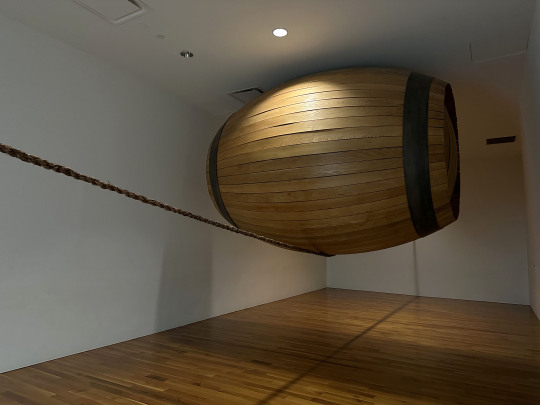

There’s an unsettling tension in the room that houses Mel Chin’s installation Spirit (1994), at the Columbus Museum of Art. Is the rope strong enough to support the barrel? What will be its breaking point?
Some details from the museum about the work-
The rope that seems to carry the weight of Spirit’s enormous cask is made from tallgrass. This native plant was once central to a vast prairie ecosystem spanning over 170 million acres of North America. By 1930, most all of this was decimated as a result of agricultural and industrial settlement, and what remains is protected habitat (Chin received special permission to harvest a portion for this sculpture).
Wooden barrels are traditionally used to measure and transport dry goods like grain, beans, as well as beer, oil and wine, and were central to the process of European settlement and trade in North America. Here, the image of this rope bearing such a massive weight suggests the precarious status of nature in a world of outsized human development. Even the gallery walls, which curve inwards on all sides, seem to respond to the strain.
#Mel Chin#Columbus Museum of Art#Art#Art Installation#Barrel#Columbus Art Shows#Environmental Art#Ohio Art Shows#Sculpture#Tension
9 notes
·
View notes
Text
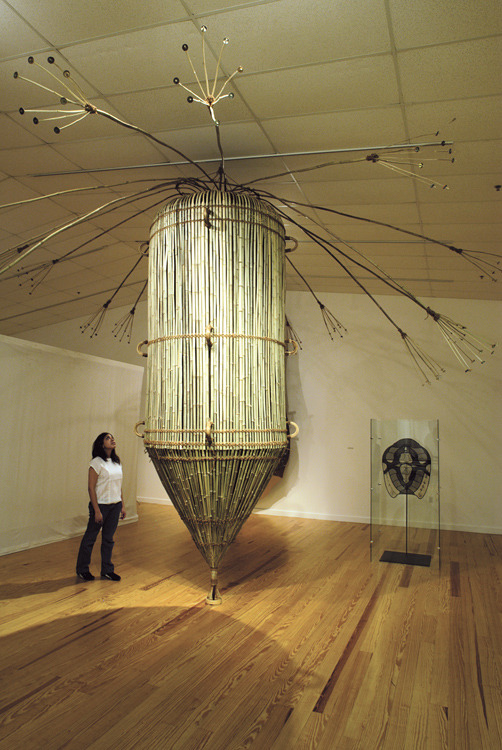
#intermediate sculpture#mel chin#Our Strange Flower of Democracy 2005#bamboo#river cane#burlap#coir#mahogany#steel#bottle caps 15x18
4 notes
·
View notes
Photo



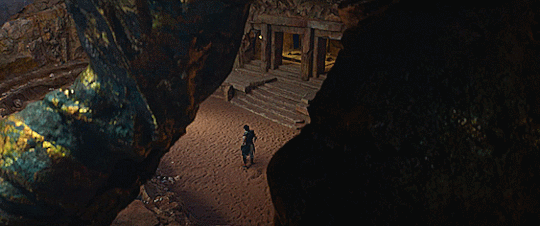



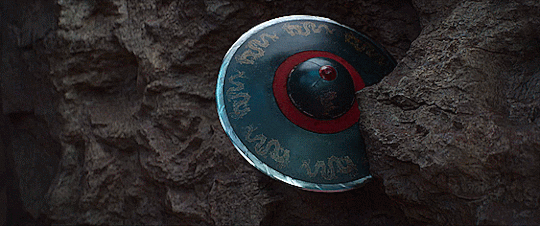
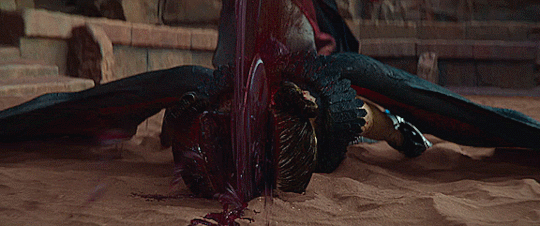

Movie: Mortal Kombat (2021) | dir. by Simon McQuoid
Kung Lao confronts Nitara front of evil Shang Tsung, at first she wants to surprise him and defeat him, but Kung Lao always attentive anticipates his attack... Kung Lao is the winner before Shang Tsung's astonished and annoyed look.
#Mortal Kombat#2021#movie#american movie#live action#Max Huang#Kung Lao#Chin Han#Shang Tsung#Mel Jarnson#Nitara
34 notes
·
View notes
Text


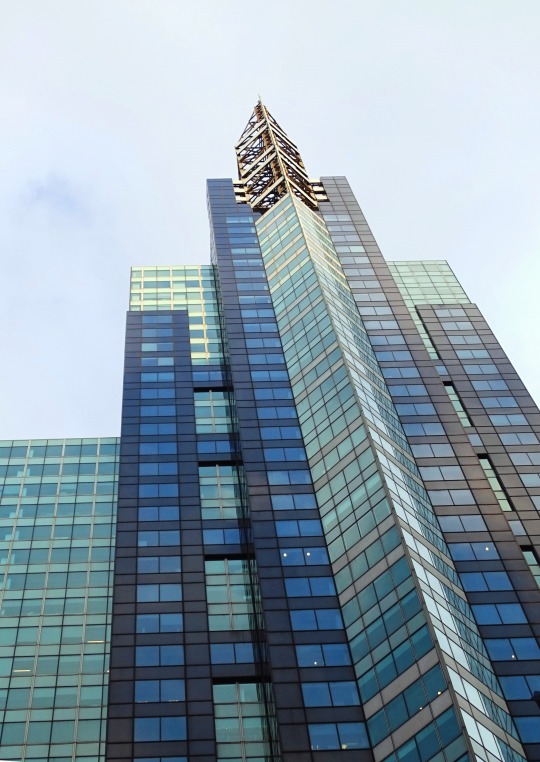





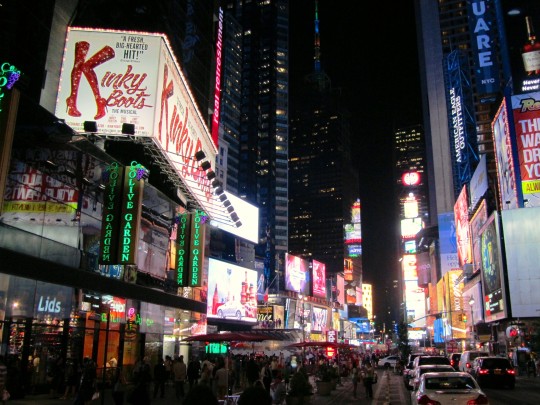

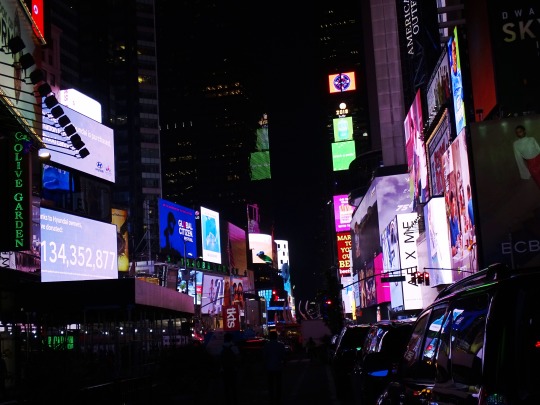
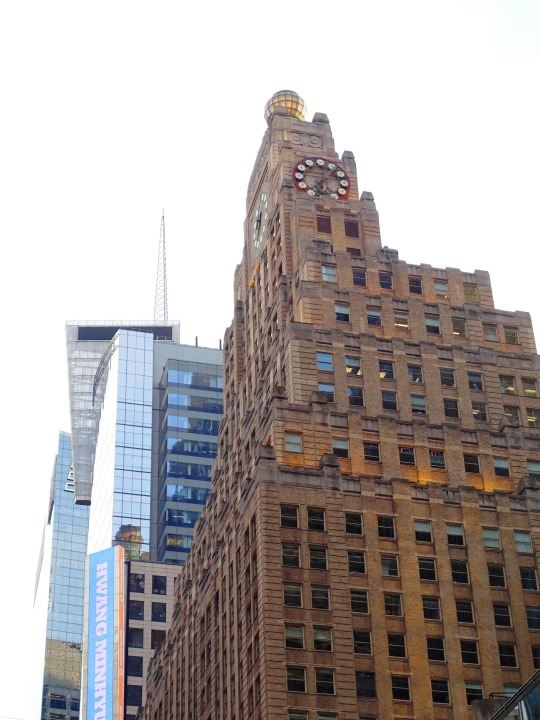
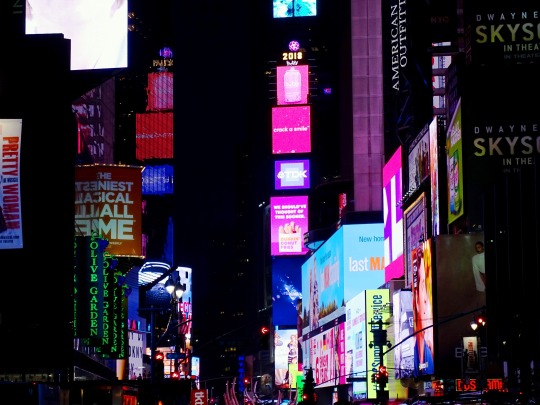

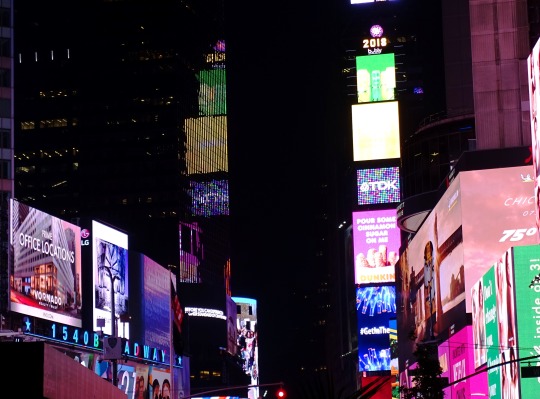
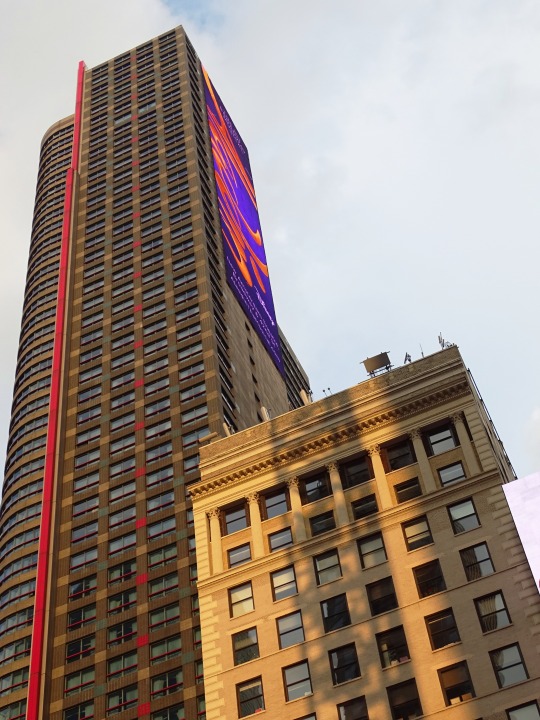

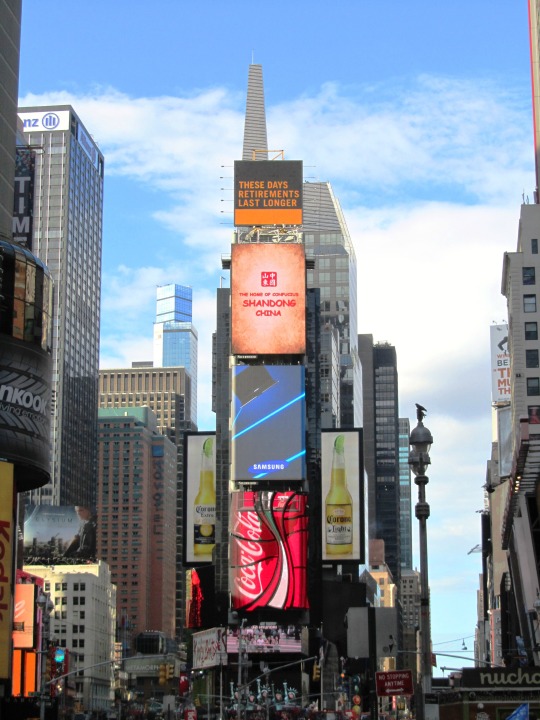

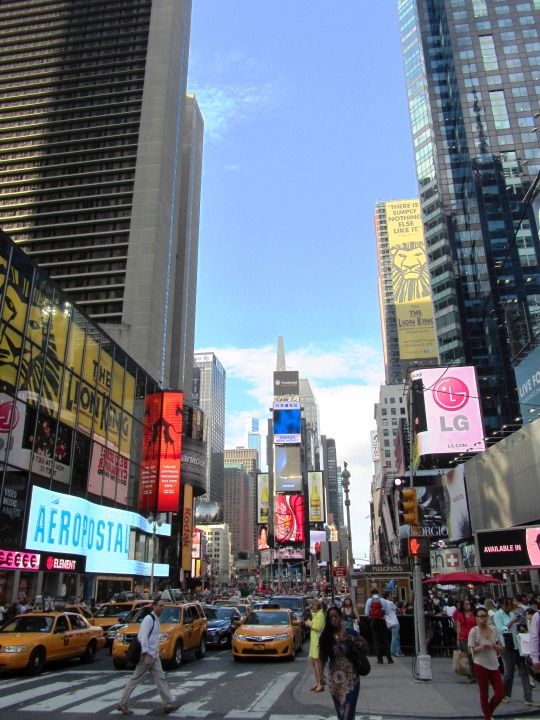
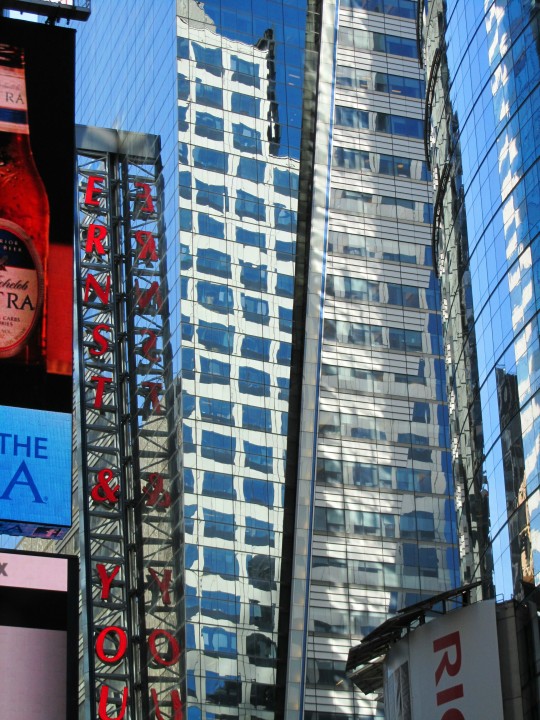

The Longacre Square in Midtown Manhattan was renamed Times Square after The New York Times on April 8, 1904.
#Longacre Square#renamed#Times Square#8 April 1904#120th anniversary#USA#too touristy for me#just passing through or taking some pics#travel#Midtown Manhattan#New York City#evening#night shot#architecture#façade#cityscape#skyscraper#tourist attraction#Wake by Mel Chin#public art#Broadway#summer 2018#Condé Nast Building#streetscene#2013#reflection#original photography#vacation#landmark#good photo op
4 notes
·
View notes
Text


Disclaimer: I have received free packs as part of the EA Creator Network
Autumn Henderson
Top Notch Infant | Active | Physically Gifted | Good
#EA Partner#ts4#sims 4#Henderson LEPacy#lepacy gen 11#sim: Autumn Henderson#she looks so much like Mel#just her jaw/chin is different
0 notes
Text
"glue song"
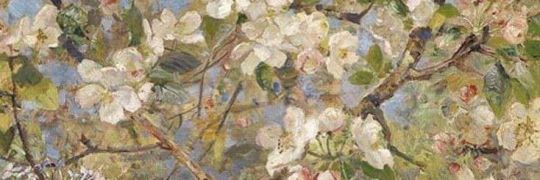
✭"don't forget to kiss me or else you'll have to miss me"✭ ~ How Arcane characters show affection headcannons {fem reader}
cast ✧ Vi, Ekko, Jayce, Viktor, Mel
cw ☞slightly pervy jayce (you can't pry him from my cold dead hands), fluff
♞Vi♞
♞Vi kisses like she is starving, and you are the first morsel of food she can get her hands on. Like she is drowning, and you are her first breath of air. It's not just desperate and hungry, but there's also a thankfulness to it. Thank you for sticking with her, thank you for being so patient with her, thank you for loving her. Vi doesn't do anything half-assedly, especially not kissing her pretty girlfriend. It's probably her favorite form of affection because it's so versatile. It doesn't have to lead to the bed if neither of you want it to, sometimes it's just on the couch, you sat in between her large thighs, positively falling into her.
♞Her favorite place to kiss you would be on your lips as she holds you chin in her rough hands. She would kiss you thoroughly and deeply, her tongue languidly kissing your own without a rush or care in the world. She is quite prone to getting overwhelmed herself, squeezing the air from both of your lungs and having the nerve to pout at you when you pull away. On her messier days, she leaves a string of spit behind, but she's always kind enough to wipe it away with a few swipes of her thumb. With every inch you pull back she leans in a mile more, chasing you as you try to catch your breath and when she does pin you down, she holds you impossibly close so you can't escape again until she's had her fill. Even then, she holds you in her large arms and tangles your limbs together, at one point sliding her hand beneath your shirt just to lay it on your tummy and feel it move as you breath.
♞Vi is also secretly a space heater. She runs incredibly hot and because of this, sleeps naked and is always down to give you her jacket. It just makes sense in her mind, seeing her clothing wrapped around you. She likes sharing most things; oddly specifically, drinks. She's gross and thinks it's hot that you're technically swapping spit. When it comes to alcohol, especially if you're not a big drinker, both of you will nurse off the same drink, her tipping your head back and pouring it into your mouth when you get a bit too tipsy to do so yourself without spilling.
♞Her go to pet name is 'pretty' and I will die on this hill. It's the thing that defines you for her. She's an idiot and a loser and she knows there's more to you than just how you look, but she just can't help it that whenever she sees you, all her reptile brain can think is 'pretty'. She absolutely abuses it, too. Besides this, I also think she would use those sleazy kinda bar pet names, like sweets or babydoll. Not in a creepy sleazy way, but that is just realistically what she would've been hearing for terms of endearment.
♞Slight side tangent, in a modern AU she is definitely one of those mascs that gets a hold to some Calvin Klein boxers and takes advantage of every opportunity possible to show the waistband off. Part of it is just her showing affection, even if you can reach tall shelves on your own, she still insists on getting the items for you. This carriers over into many things, like twisting open pickle jars or opening your soda cans if you're someone into longer nails. While she isn't as good with building things as Jinx, I think she would definitely be able to manage putting together the furniture in your shared home. Would it take all day? Well, yes! But you chose to make the best out of it and fuck on top of the furniture to test its sturdiness and congratulate your girlfriend on a job well done.
♞On the topic of nails in a modern AU, she would love a partner who gets them done absolutely goes feral if you get them customized to her liking, like coloring them after her eyes or hair or sneaking her name in there somewhere. She feels like she's made it in life when she can pay to get them done. It seems like a selfless action, but it would be a lie to say she gets nothing out of it. The scratch mark you leave on her back after break her brain a little.
★Ekko★
★Ekko loves cooking for his girlfriend! I feel like that would definitely be his main love language along with quality time. As stated before, you two would spend a lot of time in his kitchen, often times with some source of music providing a background noise to the nonsense that you concoct together, occasionally slow dancing while there's time to kill while waiting for something to finish in the oven. Food fights may occasionally occur, but he does a thorough job of licking you clean after. He claims he 'can't let good food go to waste'.
★He would also have a sketchbook absolutely full of you. You can tell when a new edition is about to be added as well. Ekko isn't loud, but he isn't quiet either. His foot is always tapping, he's usually humming something, he always has something to keep his hands busy. He's hardly ever still, except for those moments when you fully wash over him. Sometimes the lighting is exceptionally beautiful, sometimes it's in appreciation of how the wind moves the world around you, and some moments are just so breathtaking beautiful he has to take a moment to go silent, still, and stare. Sometimes he'll just tell you to be in his presence and be pretty so he can properly commit you to paint and commemorate you forever in oils and brush strokes. He's not above nude paintings, though those strokes look and feel much different.
★Ekko is the CEO of quick kisses. He's a busy guy!! He's running an entire commune. He makes the absolute most out of moments when you have the world to yourselves, but most of what you receive are quick passing kisses on your cheeks or the corner of your mouth. He misses on purpose because he simply does not believe in starting things he doesn't have the time to finish. For this reason, I don't think he'd be a big quickie guy. A kiss can easily just be a kiss, but sex is not something meant to be done in 5 minutes.
★Ekko's favorite place to kiss you would also be your lips. He's a romantic, what can I say!!! At the end of every day, you ask each other how your day was after you've both showered and gotten comfy. You both sit on his bed, set beside each other, your legs haphazardly laid over his as he casually massages your thigh. Sometimes you're both a bit too tired and aren't listening that hard, the occasional tidbit catching your attention making either of you sit straight and get closer until eventually you laid on top of him, both of you half asleep. No matter how much energy either of you has, a good night kiss is to be had. When Ekko doesn't need to be quick, he is impossibly slow. He has all the time and then some.
★Not only does he demand a good night kiss, but a good morning kiss to. He gets pouty without it. And sassy. He tells Scar, very loudly so that everyone can hear him, that you hate and don't love him anymore and he is just so deeply hurt that you would let your boyfriend, you're one true love, leave the house without kissing him goodbye and doesn't shut up about it until he gets his goddamn kiss.
★He loves picking out your outfits. He prides himself on the way he dresses and out of everyone, I think Ekko has the most domestic skills. I've already discussed how well he cooks, but I wouldn't be surprised if he also knew his way around a needle and thread. He is not just wearing any clothes; he has a sense of style that he is very proud of. This being said, he loves going shopping with you in a modern AU and he loves when you eventually get comfortable enough to not retreat into the bathroom when changing from outfit to outfit. He's the one making you do the little spin so he can appreciate the outfit from all angles.
★As far as pet names go, I think Ekko would keep it simple with "babe" or "baby" for more casual usages. I also think he would be fond of "my girl" and expects it from you in return because yes he is "your boy" and yes you are "his girl" and yes he loves you very very much. He wouldn't be a stranger to "my love", especially in the mornings or at night when your face is the first and last thing he sees when he closes his eyes. It makes him feel extra sappy.
❂Jayce❂
❂He is all over you at all times of the day omg. I feel like of everyone, Jayce would be the clingiest. This isn't to say he's attached to you at the hip, but his favorite part of the day is getting to go home to you. You're cooking and there he is sitting on the counter yapping about Hextech or something. You're taking a shower and he wants to join. And it's not just a proximity thing, it's also a touchy thing. Any reason or way he can find to touch you, he is taking it. He doesn't care if it's pathetic, dammit, he wants to be held.
❂Jayce would absolutely thrive in a modern AU. He would be the guy whose social media page are all posts about his girlfriend and does he just love to show you off. He would spoil you so good, but rather than buying anything you wanted like Mel would, I think he would also really enjoy making you presents. This isn't to say he doesn't enjoy buying you things, one of your staple pieces of jewelry is the gold anklet he bought with his initials on it.
❂Physical touch is easily his love language but he cannot handle all that, or rather, he freezes in situations where you initiate it. His hands tend to naturally find your waist and will occasionally, if he's feeling bold enough, slip down to your ass, but one time when it was freezing out, you offered your tits as handwarmers and he got a nosebleed. Jayce is definitely an undercover perv but due to never having a girlfriend before and being completely foreign with the concept that he doesn't need to hide how badly he wants to jump your bones at nearly all hours of the day, he freezes when it comes to you initiating contact.
❂He would definitely be the type to get you teddy bears and flowers just whenever. It's never with any rhyme or reason and it happens rather sporadically, just when he is out and about for any reason and thinks of you and wants to bring you something home. He thinks of you a lot, actually. Mel and Viktor love the both of you, but sometimes he goes a bit overboard when it comes to talking about you. This being said, he jumps at any opportunity to show you off. He loves going to gala's because he likes seeing you in pretty clothes and hanging off his arm. He also likes kissing you in public, even if no one's paying attention. He is well versed in the art of delayed gratification and loves getting the both of you riled up knowing full well he does not have the balls to actually fuck you with people around (he gets loud and is very well aware of this)
❂ Jayce's absolute favorite place to kiss you is your neck. He usually starts with your lips, large hands cupping your cheeks and soft lips moving over yours until he gets more antsy. His hands travel from your cheek to your neck then begin to creep under your clothes to grab and knead at your warm skin. Then he would move down your face, peppering kisses across your lips, down your jaw, then down you neck, panting as he goes along and his hands getting rougher as he tries to remain composed. He stops there for a moment, breath fanning over skin that is now slightly red from his canines nipping you and his fresh stubble scratching the area, reminding himself to be gentle and not take more than he's given. He pleads with you, his own cheeks flushed from the heat of the movement as he mutters out his "please...". He's begged you time and time again to not make him verbalize exactly what he wants, but you are relentless. At least he has the manners to ask sweetly beforehand.
❂He is the type to lay right on top of you. After you've gotten comfy in your bed, thrown on your pajama's, maybe are doing a bit of light reading before bed, he comes around to disturb your peace and lay himself right on top of you, smothering you with kisses while he lays there. He eventually moves out of his starfish position to lay his head on your chest and wrap his arms around your torse. He's like a giant, weighted, warm teddy bear
❂One of his go-to pet names would be 'baby', but only when it just the two of you. He is also quite fond of 'gorgeous' and he always has a stupid smirk on his face when he says it. His favorite would be 'sweetheart'. Slightly off topic, he would be the first to jump the gun and start calling you his wife. Especially to council members that are annoying him and taking up time he'd rather be spending with you, he is very quick to pull a "Sorry, gotta get home to my wife." He bought to matching rings for your one-year anniversary to sell the story better.
☽Viktor☾
☽As far as physical affection goes, I think he would be the least touchy. I think the touches would be concentrated on your face, lazily tracing all of your features, marking where your cheeks sink below your cheek bones, the divot between your chin and lips, and where your face is most pronounced. While he wouldn't call himself an artist, he could probably mold your face in clay from the number of times his feather light fingers have caressed every inch of it. He's utterly entranced by it. His mind often wanders while listening to you speak, eyes roaming from your lips and taking note of them in proportion to your eyes, getting lost in the color of them until his eyes flit to your nose and the way your nostrils slightly flare out. It's very mechanical, but that's just the way his brain works.
☽Less of a hugger but he does like to keep his arms around you. Especially on date nights when you're cuddled up on your couch, a myriad of snacks in between the two of you, your head resting on his shoulder while he tries to hide his snores as he falls in and out of consciousness. You accuse of him trying to go to sleep and he tells you he was just "resting his eyes".
☽He would make you all the trinkets in the world. Many of them start as failed experiments of his or scraps from projects past that need to be repurposed, but the thought is always there. He hates to waste and there's really no need to when he has a girlfriend he can make gifts for. Your vanity is full of pretty side projects, decorative boxes for your makeup, ornate music boxes, tea sets and tiny figurines. Your desk would be full of special tchotchkes.
☽Speaking of tchotchkes, I think that would be one of his playful nicknames for you. It sounds absolutely delectable in his accent. I think he would also go for the classier terms of endearment such as 'dear', 'love', 'darling' as well as variations of them in his mother tongue. He would love teaching you his native language, both as a way to bond even more but also to make sure he never loses it.
☽He would also be big on compliments. He is probably your number one supporter, but not in the loud sports fan with a huge foam finger kinda way, but in a quieter more personal way. He is extremely confident in you and your abilities as well as being endlessly proud of everything you do. He is in complete awe of you, and he tells you as such. It is impossible to feel bad about yourself in his presence, he keeps a mental rolodex of every accomplishment of yours to combat any sort of negative self-talk.
☽Not a big PDA guy. He would rather throw himself out of a window than suck face with you in Jayce's presence. He is a big hand-holder which is disastrous when doing it while walking around because neither one of you can walk straight to save your life. It's not even an issue with his leg because you do it too. You bump into each other all the time, though in the winter it is more often on purpose to keep warm.
☽Viktor's favorite place to kiss you is on your forehead. It's simple and it's sweet and more often than not what he can get away with the most. With how much time he spends in the lab, he has grown to deeply appreciate those quiet moments with you, holding your hand under the table as he works in the low light, papers rustling as he tries to find the specific formula he's looking for. Jayce is across the table, snoring loud enough to keep the both of you awake. You look like you want to kiss him, he can feel your gaze on his lips as your fingers tangle through his hair and he turns to you and gives you a small smile then a sweet kiss on your forehead. When he pulls away, he leans into you and you sit there for a moment, nose to nose. "Just a few moments, love, I'm almost done." You giggle through tiredness. "It won't be a few moments, Vik." And he appreciates your understanding more than most things in the world. "No, it won't. But I'll try to make it quick.", he promises and then plants another kiss on you
☽He really likes reading with you, or just doing activities that allow the both of you to be doing something together without necessarily needing to talk. It doesn't even have to be something he's good at, it could be a painting session, or a pottery lesson, and he would be down. He would also be the type to try and pick up on your hobbies. You like to crochet; he's also picking up a crochet needle to try and work alongside you. And he's not too proud to ask for help, he likes a relationship where both parties are constantly learning and exploring.
☼Mel☼
☼Mel is definitely the type to spoil you. She has so much money and is not afraid to use it. You really like that dress you saw while window shopping? She's already ordered it to be tailored to your exact size. You like that bracelet? You wake up to it in a box on your nightstand the next morning and spot her wearing a matching piece later on that day. It's not to try and buy your love, she just thinks you deserve the world, and if she could buy it, it would be your wedding present.
☼Mel love holding hands at all times and specifically is the type to rub the skin between your pointer finger and thumb. Her skin would also be so soft, touching her feels like touching smooth velvet. She also likes to kiss your knuckles and the inside of your wrist before letting go, the mark her lipstick feeling like a heavy imprint of her lips.
☼She is also very fond of kissing your nose. She thinks 'booping' you with her finger is childish, but she is not above a little peck on the nose, which is the abridged version of her usual ritual of pecking your forehead, nose, and lips. Those kisses are usually taken in the morning when you go your separate ways for the day, particularly those that she knows will be long and tedious. She likes to think she takes part of you with her when she does it. She misses your intellect, she misses the silent indicators of your presence, she misses how you feel. Some days, she greatly yearns to return to you. She feels like a physical weight is lifted off her back and she can actually breathe.
☼She loves spending wash days with you. Those locs take hours and you are there right by her side, gossiping and discussing everything and nothing while royal hairdressers take down or retwist that beautiful head of hair. It's even better if you're the one doing it for her. She likes the feeling of your fingers in her scalp, massaging out the wrinkles in her brain as she goes boneless in between your legs. I, unfortunately, do not think she could return the favor. She is like basically royalty; her whole life someone was likely doing it for her. She would try and learn!! It would just take a little bit.
☼I do think she would be very good at doing your makeup. She has the base routine DOWN and usually likes to do simpler eye looks, though she can do whatever you request of her. All hell breaks loose when it comes time to do lips, and her gloss would end up all over your face as she is overcome with the unabating urge to leave glossy kiss marks all over your face . You would return the favor, whatever pigmented shade you previously wore landing all over her flawless skin, and she would savor the moment with a photo she keeps in her journal
☼In a modern AU, I think she would be really good at carnival games. I can't explain it, she just would. She's not the biggest fan carnivals and fairs as they're a bit too loud and crowded for her taste, but if you wanted to go, she certainly would never say no to you. While I think Vi would try very hard to beat them only to fail, Mel would be unexplainably good at them and win you tons of prizes.
☼Mel carries a purse on her at all times and has absolutely everything in there. Pads, tampons, ibuprofen, lip gloss, hand sanitizer, wet wipes, anything you could possibly need is in that bag of hers. She also carries the big bag so you only have to carry around outfit purses than can barely handle a handful of coins. She also loves matching outfits with you!!! You probably own so many matching outfits, matching pjs, matching workout sets, as well as multiple items of clothing that are the exact same except for sizing.
☼She would be another one who constantly talks about her partner, albeit, in a much smoother way than Jayce does. Jayce jumps at every opportunity to bring you up in conversation, it's always flows naturally with Mel but she also brags far more. It's always, "That's great but my girlfriend..." or finding ways to talk about big accomplishments knowing damn well no one else can compete. See her girlfriend has a doctorate, or her girlfriend won this prestigious award, or her girlfriend was the first to do this...what were you saying about your wife though???
☼As for pet names, I think Mel would be another person who uses "my love" or "my dear" but I also think she'd be the type to refer to you as "princess". Once again, coming from royalty, she treats you as such, and that also comes down to how she refers to you. She also just likes calling you by name, usually in her sappier moments followed by her last name She can't get enough of the way it sounds rolling off her tongue and the two of you together just sounds perfect.
#arcane x reader#arcane#vi x reader#viktor x reader#ekko x reader#mel x reader#jayce x reader#arcane headcannon#arcane fanfic#arcane x you#ekko arcane#jayce arcane#mel arcane#vi arcane#viktor arcane
2K notes
·
View notes
Text
Arcane characters - what it's like to share a bed with them (Fluffy Headcannons)
Pairings - Vi, Mel, Jinx, Caitlyn, Sevika, Jayce, Viktor, ekko, silco.
Summary: what it's like to share a bed with them.
Genre:Fluff
-Vi



●Vi is a cuddler through and through. The second you're in bed, she's throwing an arm over you and pulling you close like you might disappear overnight.
●She sleeps deeply but has a habit of shifting around a lot, especially on rough nights when old memories resurface. She might tighten her grip on you in her sleep, mumbling something incoherent before settling down.
●Her body is warm, and she always runs a little hot, which is a blessing in colder months, but it might make you overheat in the summer. She doesn't mind if you push her away to cool off, but she will absolutely drag you back the second you stop sweating.
●"Babe, where do you think you're going? You're my teddy bear, 'member?" She mumbles, half-asleep, pulling you back against her chest.
●if you have trouble sleeping, she'll absentimindedly rub circles into your back, sometimes humming and old Zaunite tune she remembers from her childhood.
●Waking up next to her usually means lazy morning kisses and a smug grin as she stretches. "Sleep, okay? Sweetheart? 'Cause you snored like a bear." (She's lying, but she thinks it's funny.)
-Mel
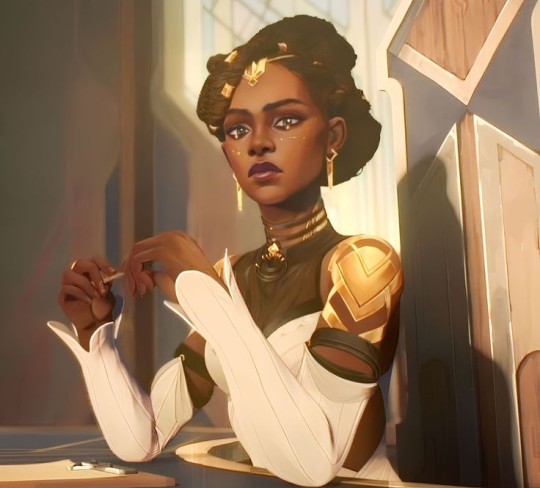
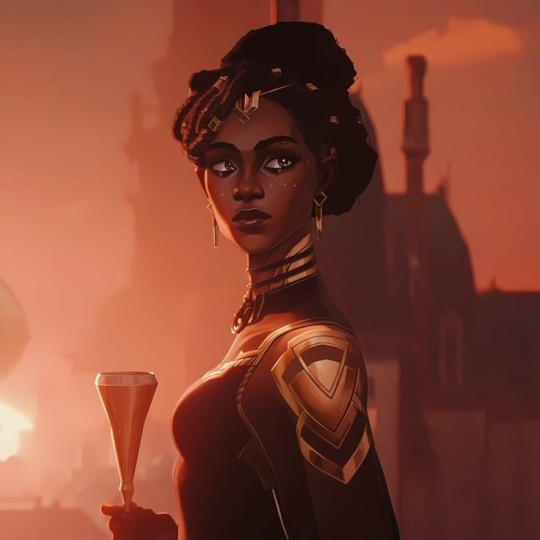

●Sharing a bed with Mel is like sleeping next to a goddess draped in silk - she always smells faintly of jasmine and wears the softest, most elegant nightgowns. She's still a sleeper and barely moves throughout the night. The only time she shifts is if you're having trouble, in which case she'll reach out and run her hands through your arm soothingly.
●"Shh, love. Close your eyes. I'm right here," she whispers, pressing a gentle kiss to your forehead.
●Her bed is insanely luxurious, with the softest sheets and plush pillows. It feels like sleeping in a cloud, and she enjoys indulging in late-night talks while wrapped up in warmth.
●Mornings with Mel are slow and peaceful. She wakes up early, but she stays in bed longer if you're still asleep, watching you with a soft smile as she traces gentle patterns on your arm.
●If you wake up before her and try to leave, her arm will tighten around your waist. "Leaving already?" She murmurs, voice husky with sleep. "Stay a little longer..."
-Jinx
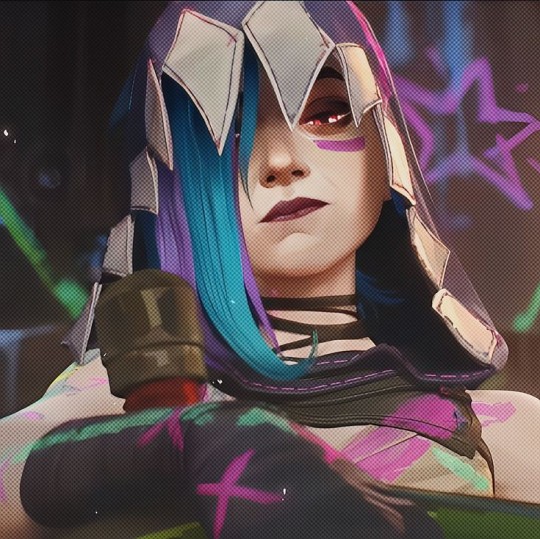


●Sleeping next to Jinx is chaotic but fun - she moves around a lot, talks in her sleep, and sometimes ends up sideways on the bed.
●"Hah! Gotcha!" She giggles in her sleep, suddenly flinging an arm over you like she just won a wrestling match.
●She doesn't necessarily need to cuddle, but she does like having you close. If you're not touching in some way, she'll grab your arm, your shirt- anything- just to feel you near.
●Some nights, when she's feeling restless, she'll start whispering nonsense or poke your cheek until you grumble at her. "Heeeey, ya awake? No? What if I.... boop!- Okay, okay, I'll stop!"
●She actually sleeps better when you play with her hair, and if you start stroking it, she'll instantly melt and snuggle into your side.
●Mornings? Absolute gremlin mode.
●"Ughhh, five more minutes, cupcake. No, ten. No,actually - just gimme the whole day."
-Caitlyn Kirraman

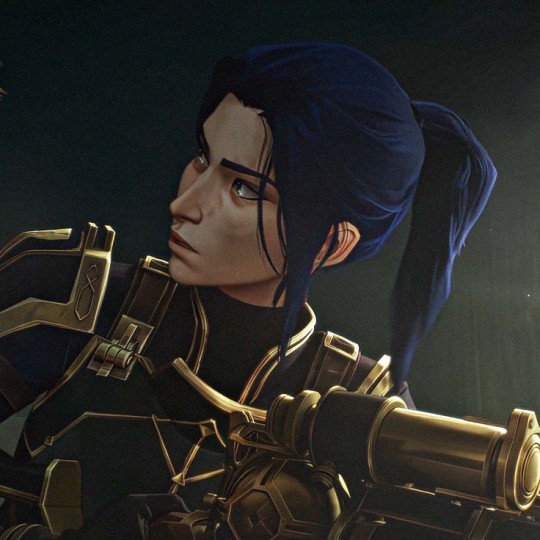
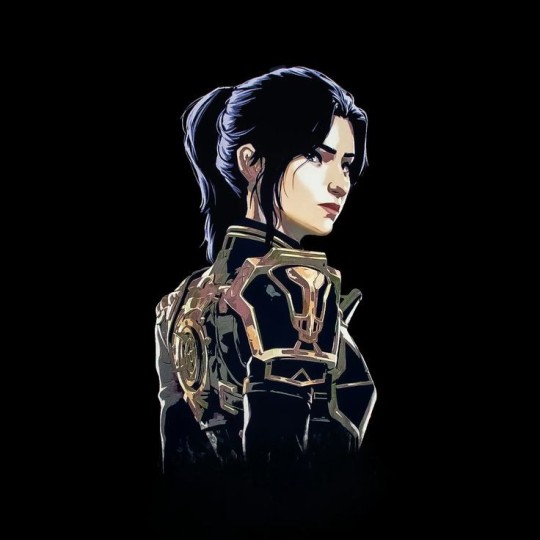
●Caitlyn sleeps with perfect posture - no tossing, no turning, just peaceful, controlled breathing, until you're in the bed.
●The moment you're there, she softens completely and instinctively pulls you close, resting her chin on top of your head.
●"Comfortable?" She murmurs sleepily, pressing a light kiss to your hair.
●She's the type to wake up early, but if she doesn't have immediate duties, she'll stay in bed a little longer, stroking your arm absentimindedly while enjoying the warmth.
●Love pillow talk at night. If you're both lying awake, she'll ask about your day, your thoughts, your dreams - anything to pull you into comfort.
●Her bed always smells fresh and immaculately clean, with crisp linens and just the right amount of fluff.
-Sevika
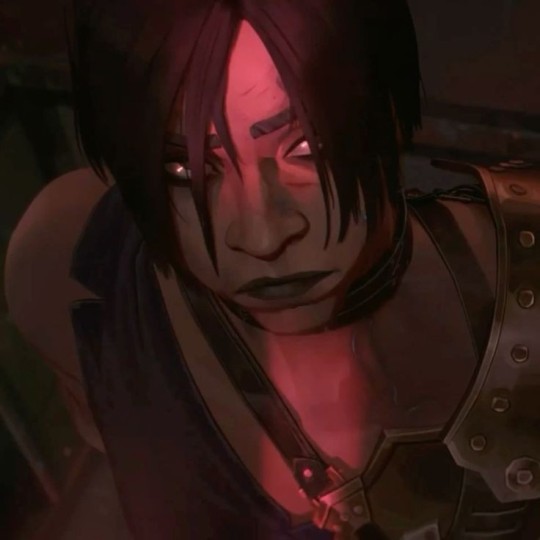


●Sharing a bed with sevika is like sleeping next to a human furnace - she radiates warmth and sleeps like a rock.
●She's not overly clingy, but if she's in a particularly protective mood, she'll hook an arm around your waist and keep you there like a personal pillow.
●"You move too much." She grumbles when you try to shift. "Relax."
●She's got a deep, steady heartbeat, and resting your head against her chest is enough to knock you out instantly.
●Sometimes, in the dead of night, if she wakes up and notices you're still awake, she'll rub your back absentimindedly, muttering, "Go to sleep, doll. I got you."
●Mornings are slow and lazy, and she usually pulls you back down if you try to get up too early. "Stay. too early to deal with people."
-Jayce



●Jayce is a big guy, which means big warm cuddles. You're basically trapped in a muscle cocoon all night.
●He snores lightly, but if you poke him, he'll mumble a half-asleep apology and shift to a quieter position.
●If you're cold, he immediately tucks you into his chest and rubs your arm to warm you up. "Damn, babe, you're freezing, C'mere."
●In the mornings, he grumbles like a bear but will wake up fast if you start playing with his hair. "Mmm... that's nice... wait, what time is it?"
-Viktor

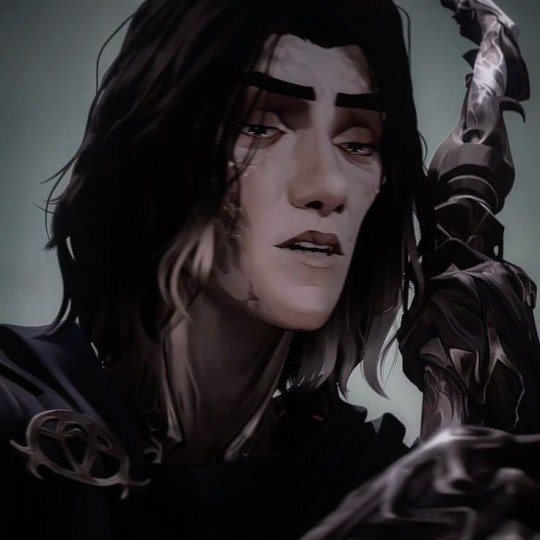

●Viktor sleeps like a cat in a sunbeam- curled up, comfortable, and completely at peace once he finally drifts off.
●He often falls asleep mid-conversation, and you'll hear soft murmurs of unfinished thoughts as he dozes.
●If he wakes up and finds you cold, he'll drape his blanket over you without a second thought, even if it means he's left shivering.
●in the mornings, he's slow to rise, muttering in groggy confusion as he rubs his eyes. "... What time is it? No, too early... five more minutes."
-Ekko



●Ekko is a cuddle bug, no doubt about it. He loves wrapping himself around you, tangling your legs together like it's the most natural thing in the world.
"Mmm, you're comfy," He murmurs sleepily, nuzzling into your shoulder.
●If you have trouble sleeping, he'll start rambling about random stuff - stories from the Firelights, funny memories, or crazy theories - until you eventually doze off. He sometimes mumbles in his sleep, and you'll hear bits of phrases like, "No, don't touch that... ugh, dumbass..."
●Mornings are playful - he wakes up with a sleepy grin and tries to tickle you awake if you're being stubborn about getting up.
-Silco

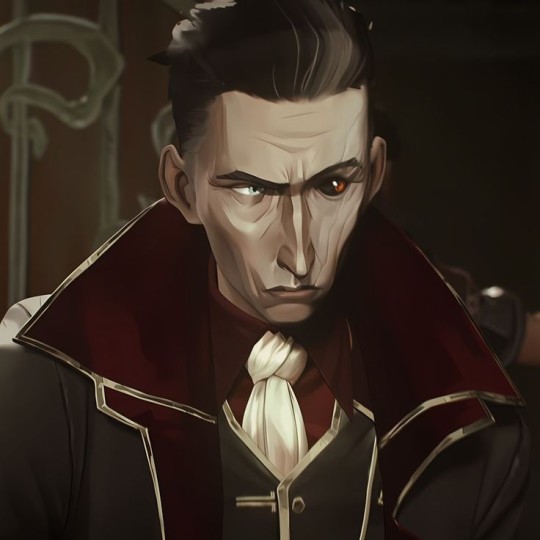
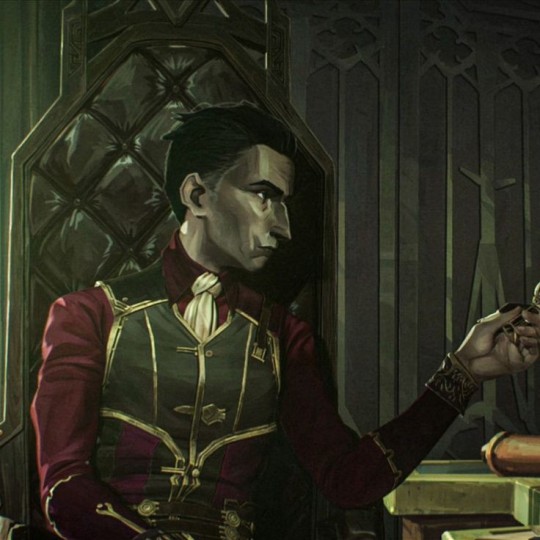
●Sharing a bed with silco is surprisingly comfortable - he doesn't move much, but his presence is incredibly calming.
●He's a light sleeper and will wake up instantly if you seem distressed, rubbing soothing circles on your back without saying a word.
●He doesn't cuddle outright, but he always makes sure some part of him is touching you - whether it's an arm resting beside yourself or his hand loosely holding your fingers.
●if you try to get up too early, he'll softly murmur, "Stay," without even opening his eyes.
#i watched arcane#i watched arcane yesterday it is so good!!#vi arcane#vi arcane x reader#jinx x reader#caitlyn kiramman#caitlyn kirraman x reader#sevika#sevika x reader#arcane viktor x reader#arcane viktor#ekko x reader#arcane silco#silco x reader#jayce talis#jayce talis x reader#mel medarda#mel medara x reader#arcane x black reader#arcane fluff#arcane Headcannons
1K notes
·
View notes
